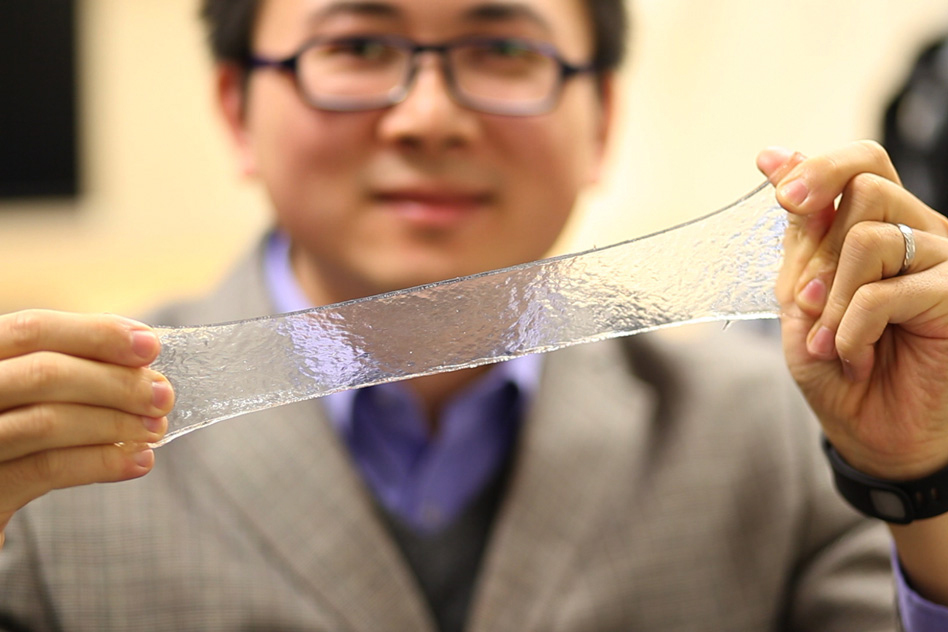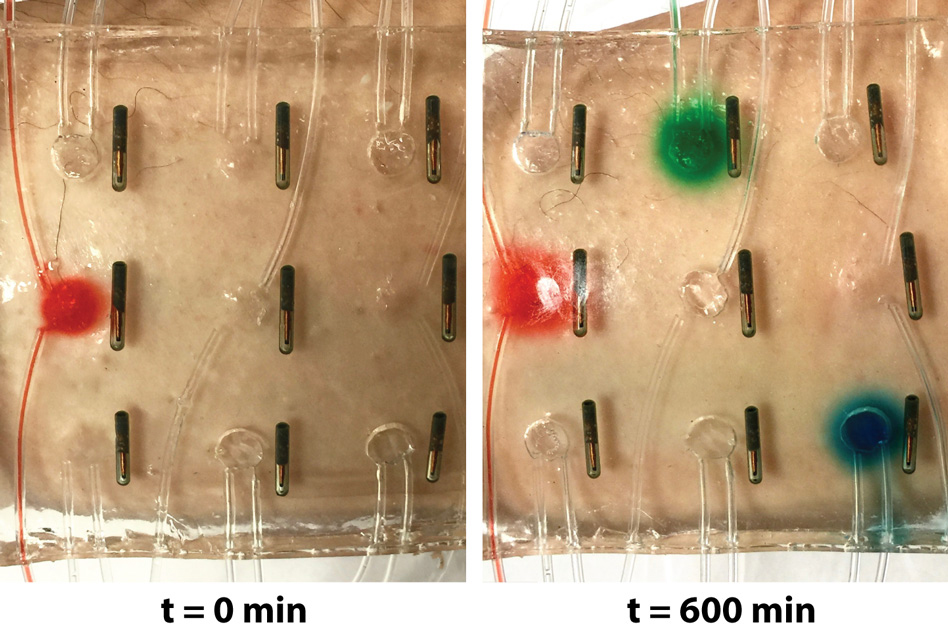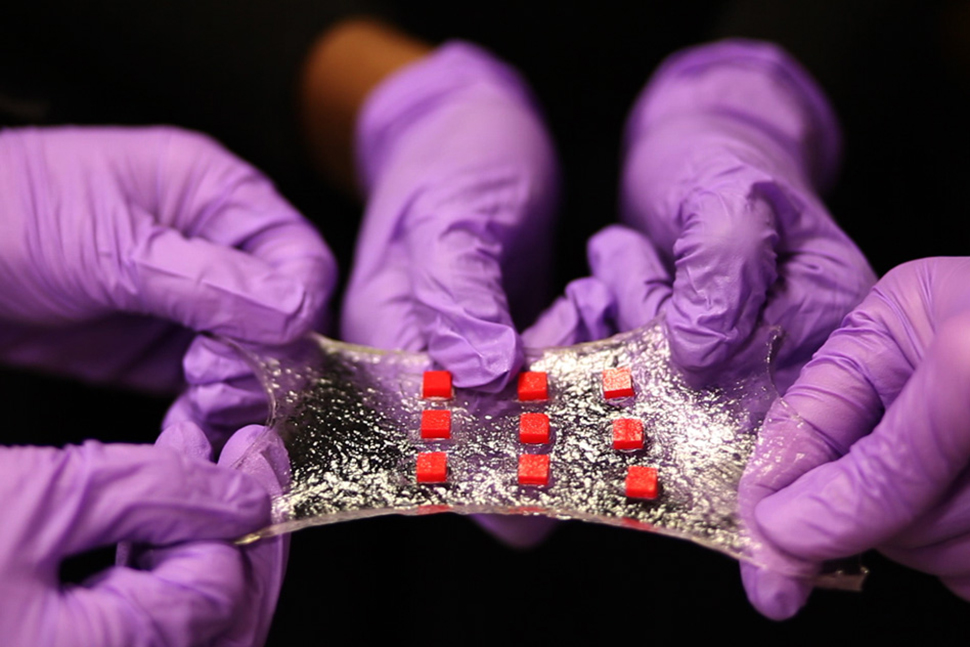Xuanhe Zhao and his MIT team have successfully embedded the hydrogel polymer with conductive wires, semiconductor chips, LED lights, and temperature sensors. The team’s most promising combination of tech capabilities allows the bandage to administer medication when the wearer’s body temperature changes. When the bandage’s sensors detect a significant change, tiny drug reservoirs and delivery pathways release medication directly to the person’s body. LED light panels embedded in the hydrogel can even be used to indicate when stores of drugs within the reservoirs are running low.
The hydrogel material itself is made of mostly water, combined with flexible biopolymers that keep the bandage flexible and soft. While maintaining this pliability, the hydrogel still forms a strong bond with surfaces as varied as human skin, titanium, silicon, glass and ceramic. The flexibility of the hydrogel enables the smart bandage to last longer, all while protecting the integrity of the bandage’s technological components. Electronic wires and heat sensors embedded in the bandage were able to withstand repeated stretching during lab testing.
Beyond the skin-level smart bandage, Zhao’s technology could also be used for internal medical applications. Implanted glucose sensors and neural probes are often rejected by the body as foreign objects, but this kind of internal monitoring would be easier than ever if electronic components were embedded in a hydrogel that mimics local human tissues. Embedding time-release medication reservoirs, heat sensors, and wires in smart implantable hydrogels would be a powerful tool for the field of medicine.





